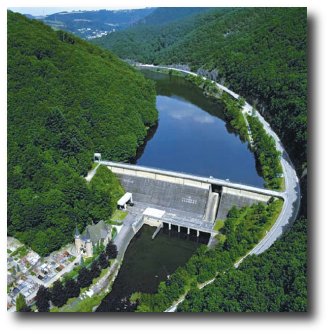
Hydro Electricity
Hydro electricity is generated by moving water through turbines, similiarly to how wind energy is generated. To make hydro electric power, water is stopped up using many different available methods of "dams". Large pipes flow through the dam construction and direct water to the turbines which are rotated by the force of the water. The hydro-electric power stations have the ability to control the water level by opening and shutting "water gates" which shuttle water into the turbine rooms.
 There are both advantages and disadvantages to using hydro electricity.
There are both advantages and disadvantages to using hydro electricity.
Advantages
- Water is free and a completely renewable source of energy
- There are no true carbon emissions resulting from a hydro-electric power plant
- The hydro power plants are very cheap to operate
- Water is the most abundant resource on earth
Disadvantages
- Hydro electricity power plants are expensive to build
- Dams are a potential threat to cities that lie downstream from them
- Flooding can destroy plant and animal life
- Dams can cause soil erosion and destroy the natural surrounding environment
As renewable and green as hydro electricity may seem, in most areas where it has been developed, it has had negative effects on the surrounding areas. We need to decide if these risks are worth taking so that we can have freedom from oil, and independence through alternative energy.










